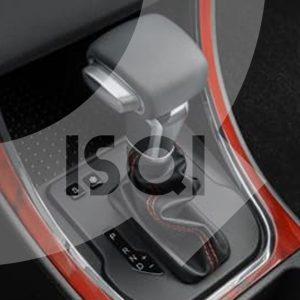With the constant traffic that covers almost the entire country, driving becomes very difficult and tiring with each passing day. However, the only thing that makes tolerating traffic a little easier are the automatic transmissions. Without the need to constantly press the clutch, driving with an automatic transmission can be effortless and completely damage-free!
So without further ado, here’s everything you need to know about driving an automatic transmission vehicle. It is very important to familiarize yourself with the arrangement of automatic transmissions before starting to drive with an automatic transmission. Unlike the manual transmission, which consists of the gas pedal, brake and clutch, in automatic cars, the gas pedal and brake pedal are the only control pedals, and there is nothing about the clutch pedal anymore!
Familiarity With Automatic Transmission Components
The gear lever in an automatic vehicle is different from its manual version. Unlike manual transmissions, automatic transmissions usually have the following symptoms:
- Park (P): The park position in an automatic car locks the gears so that the wheels cannot move. As the name suggests, the parking position is used to park the car. You should also put the gearbox in this position before starting the car and then start the car.
- Reverse (R): As indicated, the reverse position is used for or toward the back.
- Neutral (N): Just like the neutral mode in a manual transmission, the neutral position is used when stopping in traffic.
- Drive (D): You use this position when you want to move forward. Upshifts and downshifts are automatically used by the transmission unless you put the transmission in manual mode.
- Manual (M): An automatic vehicle changes gears automatically through software algorithms, however you can control the timing of the gear changes. The manual mode is used to control the gears in the automatic transmission, where the + sign indicates an increase in the gear and the – sign indicates a decrease.
Fuel Consumption of Automatic Cars Compared to Manual Cars
In the past, it was almost a given that manual transmission vehicles were more fuel efficient than their automatic counterparts. But today, with the advancement of new automatic transmission technology, the fuel consumption of these transmissions has decreased compared to their manual counterparts.
Acceleration of Cars With Automatic Transmission Compared to Cars With Manual Transmission
Manual transmissions often have better acceleration than automatic transmissions. In a car with a small engine volume, it is a welcome advantage.
The Advantage of Automatic Transmission Over Manual Transmission
When driving automatic cars, the first thing you will notice is that they are much easier to drive than manual transmission cars. In these cars, you can drive easily without pressing the clutch or knowing the right gear for the speed of movement. Also, driving with an automatic transmission reduces the fatigue caused by traffic. In automatic cars, the possibility of crushing the gears is less, but if the gearbox fails, the cost of repairing it is very high.
How to Drive an Automatic Car in Traffic
Avoid rapid acceleration. It’s true that traffic jams take a toll on your mind, but the best way to deal with it is to stay calm and cool. Whenever you drive an automatic car in traffic, use a low rev, meaning just release the brake pedal and let the car go forward. Do not apply too much pressure on the gas pedal to move forward as this will only result in excess pressure and loss of vehicle control.
Drive as smoothly as you can. According to Engineering Explained, you should never do the following while driving an automatic transmission car:
-
Never drive downhill in neutral (N)
Many drivers mistakenly believe that driving downhill in neutral can reduce fuel consumption. But putting the automatic car in neutral mode only reduces its speed, but does not save fuel consumption. Also, the neutral gear deprives the driver of the control of the car, in the sense that it deprives the driver of maneuvering power in emergency situations.
-
Never change direction without stopping
Some people change gears before their car comes to a complete stop, this seriously damages the gears. You may be in a hurry, but it doesn’t make sense to change direction without stopping completely. In addition, this leads to wear of the gears and you may have to spend a lot of money to replace the entire transmission system.
-
Never put the transmission in neutral at a red light or traffic
It doesn’t make sense to shift into neutral at a traffic light to save fuel. Traffic lights only bring you to a stop for a few minutes, you subject them to unnecessary wear and tear every time you change gears. You may have to replace them sooner than you think. In heavy traffic, put the transmission in manual mode (M) and start moving in 1st gear to avoid constant gear shifting between 1st and 2nd to reduce wear and tear on the transmission.
Maintenance of Automatic Transmissions
In cars with automatic transmission, regular maintenance and periodic service, using high-quality transmission oil and not changing car rims can prevent their premature wear.
Automatic Transmission Oil Change Time
Nothing extends the life of a car like regular oil changes. In automatic transmissions, the recommended interval for changing the transmission oil is approximately every 96 to 160 thousand kilometers or 30 months. (Check your owner’s manual or service manual for details).
If the oil indicator is dark or smells burnt, the automatic transmission oil (ATF) should be replaced as soon as possible.







